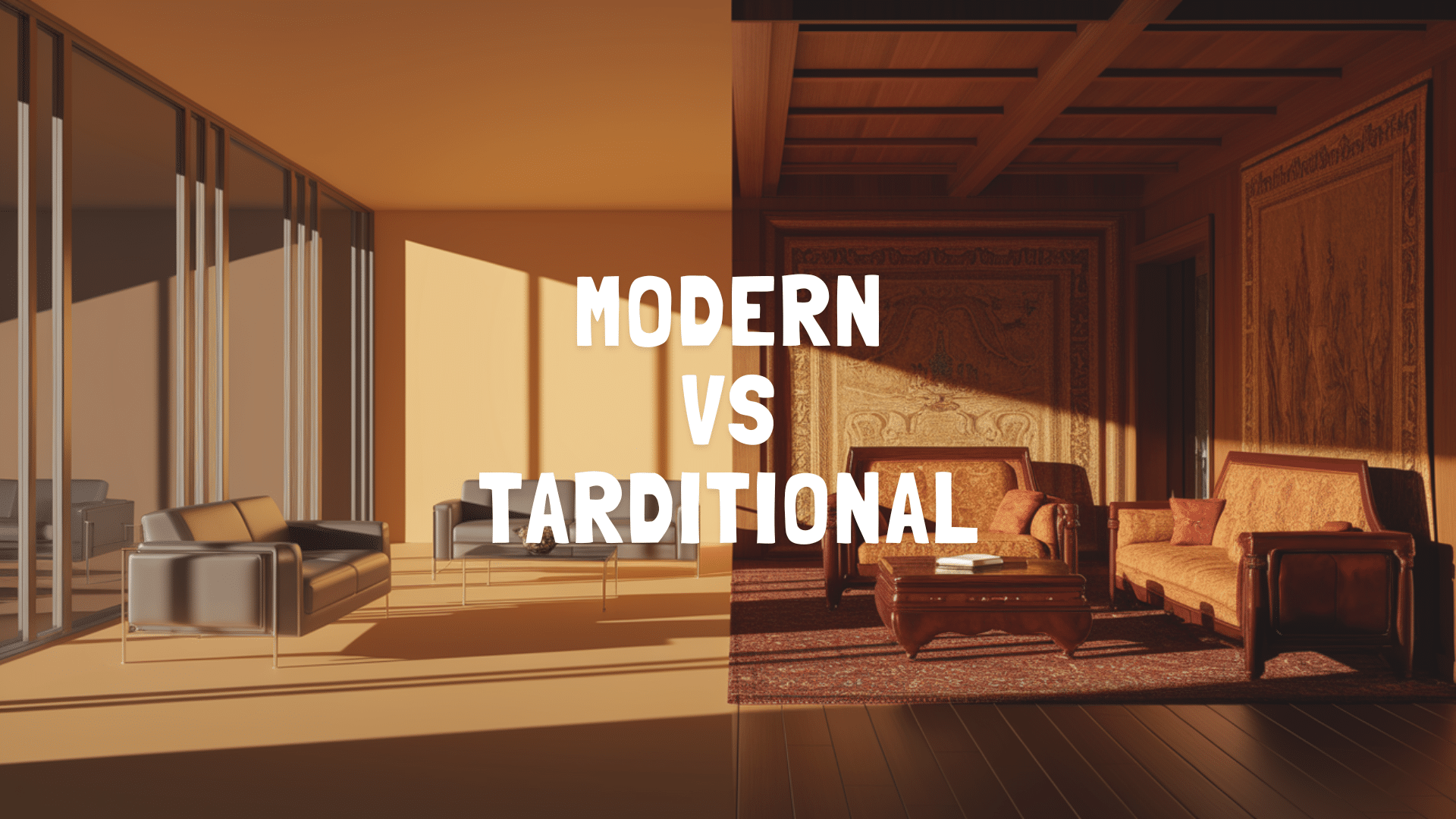That moment when you see a room and think, “Wow, this feels just right!” It’s not just luck. The most loved spaces mix both old and new in a way that feels real. Stuck between clean modern lines and rich traditional details? You’re not the only one.
Some homes feel too cold with their sleek modern lines. Others seem stuck in the past with heavy traditional elements. The good news? You don’t have to choose just one style.
Finding your unique style isn’t about picking sides in the modern versus traditional debate. It’s about discovering what speaks to you. What makes you feel at home? What pieces tell your story?
This guide will show you how to mix elements from both worlds to create spaces that feel truly yours. Get ready to discover the perfect blend that matches your personality and lifestyle.
What is Modern Architecture Design?
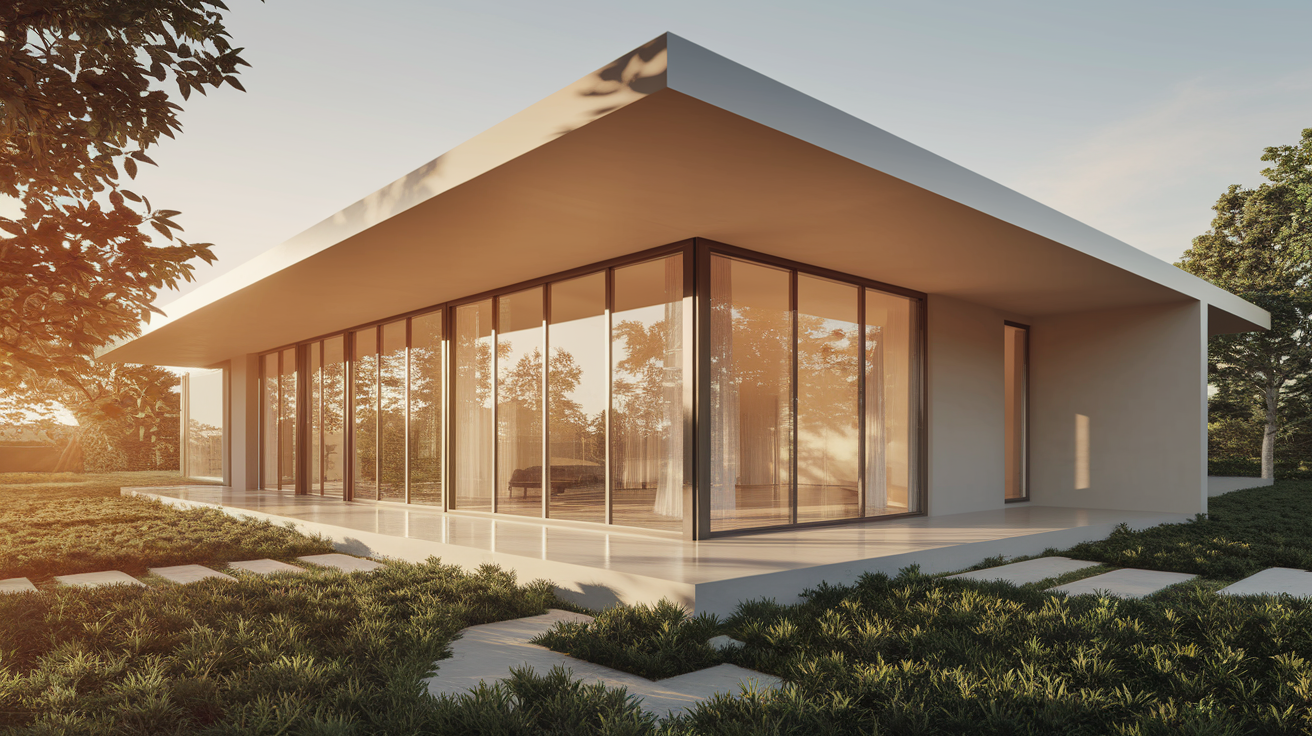
Modern architecture breaks away from traditional designs in favor of new ideas, materials, and building methods.
Modern architecture began in the early 20th century as a response to major changes in society. The Industrial Revolution introduced new building materials, including steel, concrete, and glass.
World wars and economic shifts created the need for affordable, practical housing. Designers sought to move away from ornate historical styles toward a design that reflected the new, faster-paced world.
Focus on Function, Simplicity, and Innovation
Modern design follows the idea that “form follows function.” This means a building’s purpose should determine how it looks, not the other way around. Key features include:
- Clean, straight lines with minimal decoration
- Open floor plans instead of separate rooms
- Large windows for natural light
- Flat or low-slope roofs
- Honest use of materials (showing concrete, steel, and glass instead of hiding them)
Popular Modern Architects and Influence
- Frank Lloyd Wright: Created the “Prairie Style” with horizontal lines and open interiors that changed how we think about homes
- Ludwig Mies van der Rohe: Known for glass skyscrapers and the phrase “less is more.”
- Le Corbusier: Pioneered the use of reinforced concrete and designed homes as “machines for living”
- Walter Gropius: Founded the Bauhaus school that merged art with industrial design
- Eero Saarinen: Created curved, sculptural buildings that pushed the limits of modern design
These architects influenced everything from city skylines to suburban homes, introducing ideas such as built-in furniture, picture windows, and open kitchens into everyday life.
What is Traditional Architecture Design?
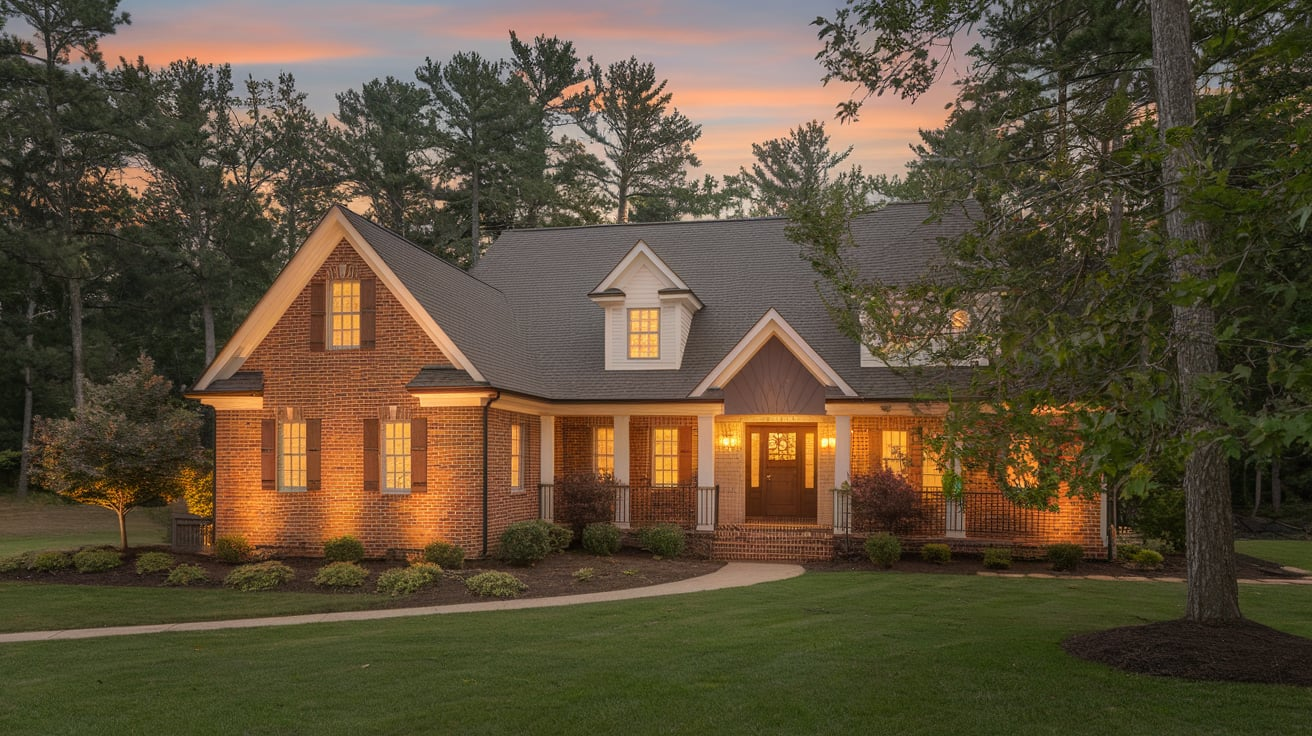
Traditional architecture design draws from historical styles and time-tested building methods passed down through generations.
Traditional architecture is deeply connected to local history, materials, and building practices. These designs evolved over many years to suit specific climates, available resources, and cultural needs.
What makes a home “traditional” often varies by region, with each area developing its own signature style based on practical needs and cultural values.
Focus on Comfort, Warmth, and Symmetry
At its heart, traditional architecture values comfort, symmetry, and familiar patterns. You’ll spot these homes by their balanced layouts, detailed trim work, and natural materials like wood, stone, and brick.
Colors tend to be warm and muted, creating a sense of coziness and timelessness rather than following current trends.
Examples of Common Traditional Styles
- Colonial: Features symmetrical facades, centered doorways, and evenly spaced windows
- Victorian: Known for ornate details, steep roofs, and decorative trim
- Craftsman: Celebrates handcrafted woodwork, built-in furniture, and covered porches
- Tudor: Recognized by its steep roofs, decorative half-timbering, and tall chimneys
- Mediterranean: Characterized by stucco walls, red tile roofs, and arched doorways
Features of Modern Home Design
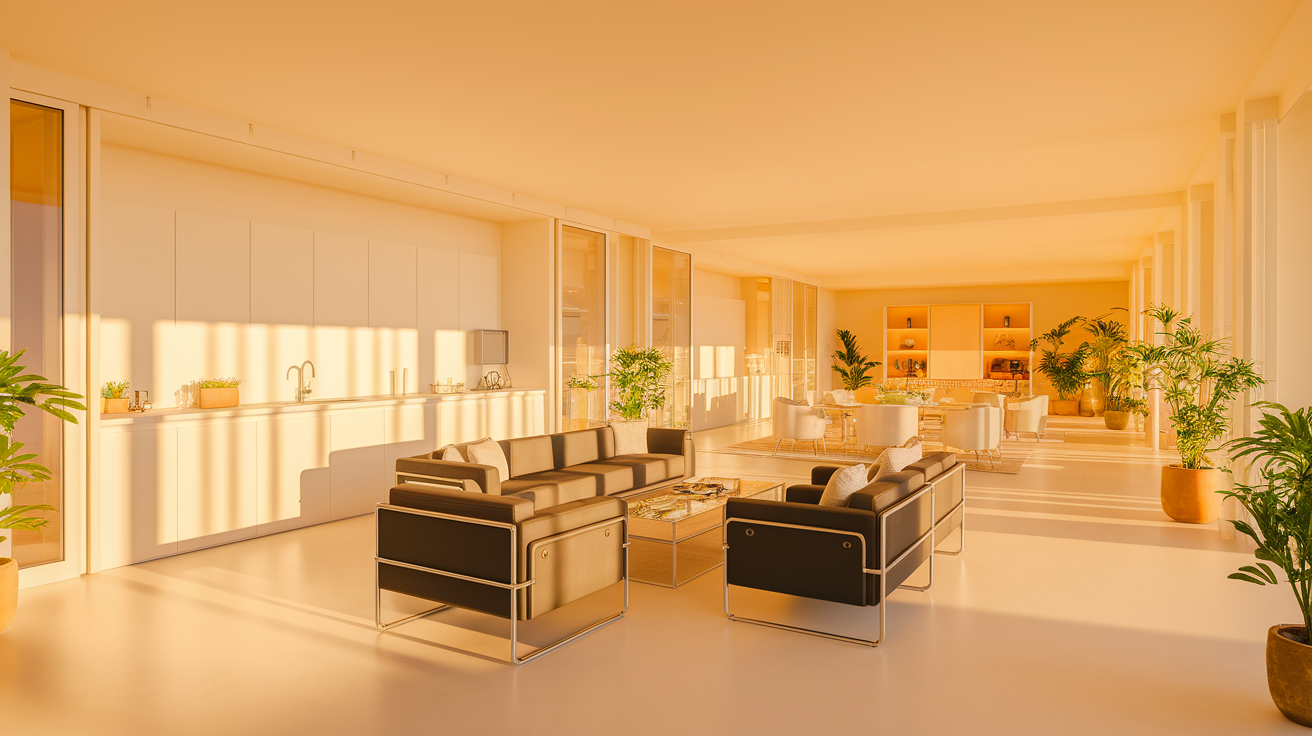
Modern homes create a distinctive look through simplicity and openness. The focus is on clean lines, uncluttered spaces, and a seamless flow between rooms.
Open floor plans remove walls between living areas, creating spaces where cooking, dining, and relaxing happen in one connected area. These open designs make homes feel larger and allow for more flexible use of space.
Key elements that define modern homes:
- Floor-to-ceiling windows that maximize natural light
- Flat or low-pitched roofs with simple lines
- Minimal trim and decoration around doors and windows
- Built-in storage solutions that reduce visual clutter
- Indoor-outdoor connections through large sliding doors
Modern design embraces new materials and technology. Concrete, glass, and metal surfaces are often left exposed rather than covered up, celebrating their natural appearance. Smart home systems control everything from lighting to security, making daily living more convenient and efficient.
Features of Traditional Home Design
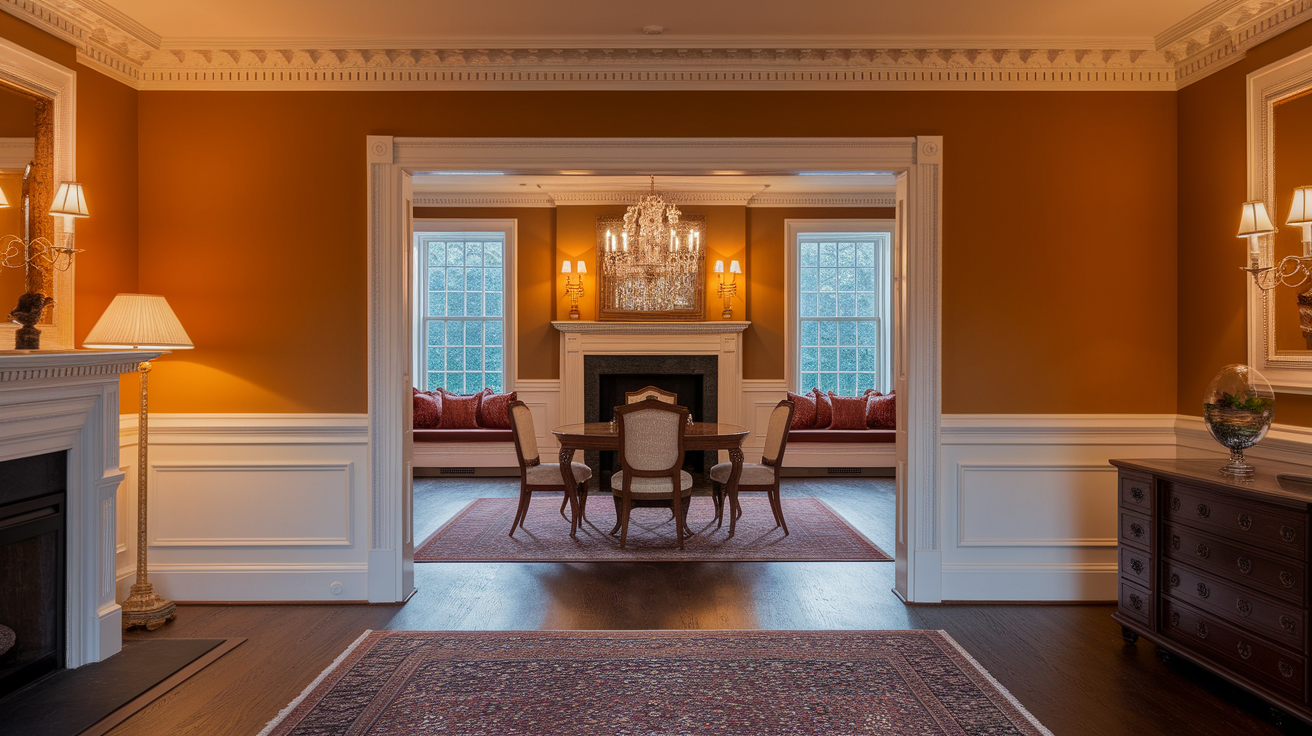
Traditional homes draw inspiration from historical styles, offering familiar comfort and timeless appeal. These houses exude a sense of established permanence, with meticulous attention to detail and exceptional craftsmanship throughout.
Unlike the open layouts of modern homes, traditional designs feature separate rooms for specific purposes. This creates a sense of order and provides privacy between different household activities.
Signature features of traditional homes:
- Detailed trim work around doors, windows, and ceilings
- Symmetrical placement of windows and architectural elements
- Front porches with columns or detailed railings
- Formal entryways that make a welcoming statement
- Fireplaces as central focal points in main living areas
Natural materials give traditional homes their warm, inviting character. Brick and stone exteriors age beautifully, while wood floors and cabinetry bring richness to interiors. These classic materials connect to building traditions that have stood the test of time.
Key Differences Between Modern and Traditional Homes
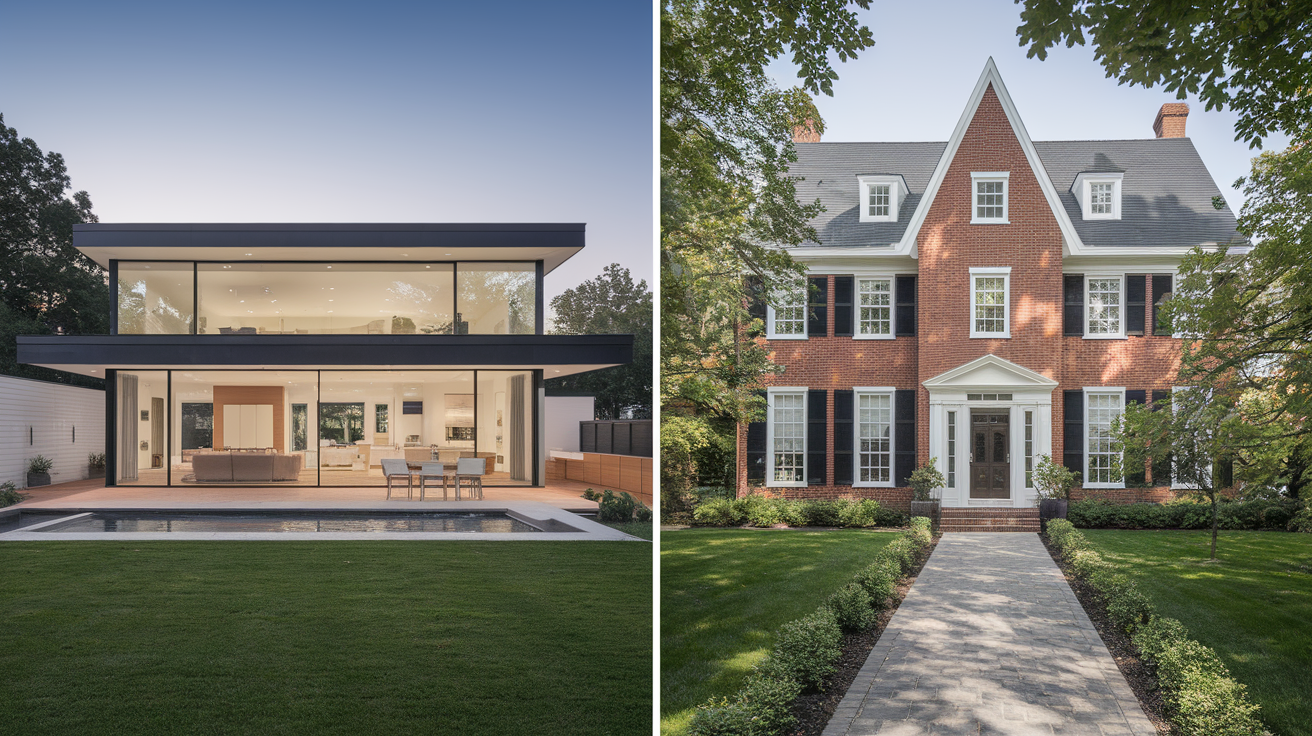
Not sure which style fits your needs? These comparisons will help you understand what makes each unique.
Side-by-side Comparison
Looking at the basic elements and features that define each architectural approach:
| Feature | Modern Homes | Traditional Homes |
|---|---|---|
| Layout | Open floor plans with few walls | Clearly defined, separate rooms |
| Ceiling Height | Often varied or high ceilings | Consistent, standard ceiling height |
| Windows | Large, often floor-to-ceiling | Multiple, smaller, symmetrically placed |
| Materials | Glass, concrete, steel, minimal wood | Wood, brick, stone, natural materials |
| Color Palette | Neutral with occasional bold accents | Warm, rich, and muted tones |
| Roofline | Flat or low-pitched roofs | Steep, pitched roofs with clear shapes |
| Decoration | Minimal, focuses on clean lines | Detailed trim, molding, and ornamentation |
| Furniture | Simple, functional, often built-in | Ornate, substantial, traditional styling |
| Kitchen | Open to other spaces, minimal | Often separate, detailed cabinetry |
| Technology | Integrated, smart-home features | Technology added as needed, less integrated |
Lifestyle and Taste Considerations
How your daily habits and preferences might align with each design style:
| Lifestyle Factor | Modern Appeal | Traditional Appeal |
|---|---|---|
| Entertaining | Great for casual, flowing gatherings | Better for formal dinner parties |
| Family Life | Easy to supervise children in open plans | Separate rooms provide quiet spaces |
| Work from Home | Can be challenging to find private space | Dedicated rooms offer privacy |
| Maintenance | Often lower maintenance materials | May require more upkeep of details |
| Storage | Built-in, hidden storage solutions | Traditional closets and furniture for storage |
| Environmental | Often more energy-efficient | Classic materials may be more durable |
| Visual Preference | Appeals to those who like minimalism | Appeals to those who enjoy detail |
Modern & Traditional: Finding Your Perfect Mix
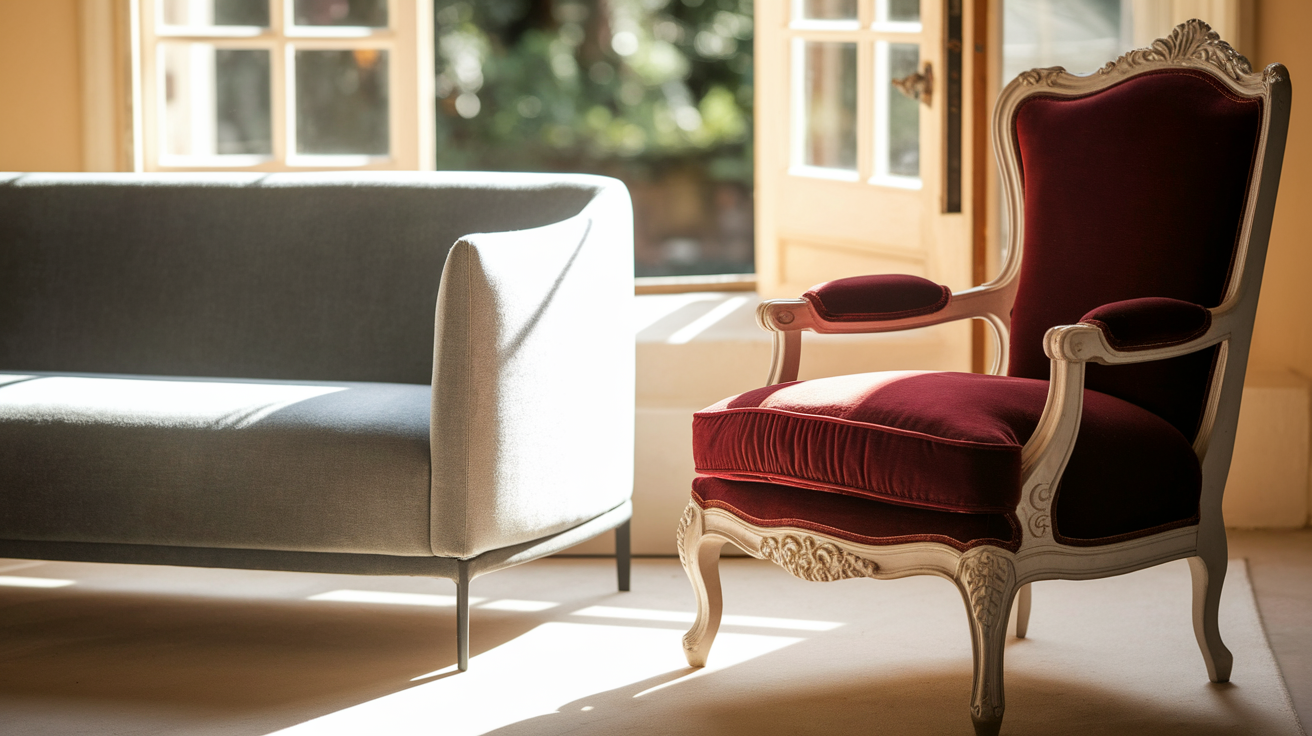
You don’t have to choose just one style. Many of today’s most loved homes mix elements from both modern and traditional design.
Why Mixing Styles Works
Creating a blend of styles gives you the best of both worlds. You can enjoy the comfort and warmth of traditional elements while also having the clean, fresh feel of modern design. Mixed styles also:
- Create more personal spaces that reflect your unique taste
- Allow for more flexibility as your needs change
- Prevent your home from looking dated or like a showroom
- Let you keep treasured items while updating your space
Simple Ways to Mix Modern and Traditional
Here are some easy methods to create a balanced blend:
| Modern Element | Traditional Element | How They Work Together |
|---|---|---|
| Open floor plan | Traditional furniture | Modern space with familiar, comfortable pieces |
| Clean white walls | Rich wood floors | Bright, fresh backdrop with warm foundation |
| Minimal kitchen cabinets | Classic marble countertops | Clean lines with timeless materials |
| Modern lighting fixtures | Traditional architectural details | Updated functionality with character |
| Simple window treatments | Detailed trim and molding | Uncluttered windows with classic framing |
Not ready for a full renovation? Try these simple updates:
- Add modern lighting to a traditional room
- Introduce a sleek coffee table to a room with traditional seating
- Paint traditional woodwork in an updated color
- Replace heavy curtains with simple window treatments
- Mix picture frames – modern and traditional – in a gallery wall
Remember, there are no strict rules. The most important thing is creating a home that feels right to you.
Success Stories: Real Homes That Mix Styles
Many homeowners have found their perfect style by thoughtfully combining elements:
- The Johnson Family: Kept their 1920s home’s original trim work and fireplace while opening up walls between the kitchen and dining room for a more modern flow
- Apartment 14B: Mixed sleek modern furniture with vintage rugs and art for a space that feels both current and collected over time
- The Beach Cottage: Updated a traditional seaside home with glass walls that open to the ocean while keeping classic beadboard and built-ins
Finding Balance: Your Perfect Home Style
Your home should reflect who you are, not just what’s trending or traditional. The best spaces blend elements from different styles to create something unique and personal.
Start by identifying what you truly love in both modern and traditional design. Perhaps it’s the clean lines of modern spaces, but the warmth of traditional materials. Or maybe you appreciate modern technology with traditional architectural details.
Remember that your home evolves with you. Don’t rush to create a magazine-perfect space overnight. Let your style develop naturally as you discover what truly makes your house feel like home.
The perfect style isn’t modern or traditional—it’s authentically yours.
Looking for more interior design inspiration? Check out our other guides on interior design to create a home you’ll love.

